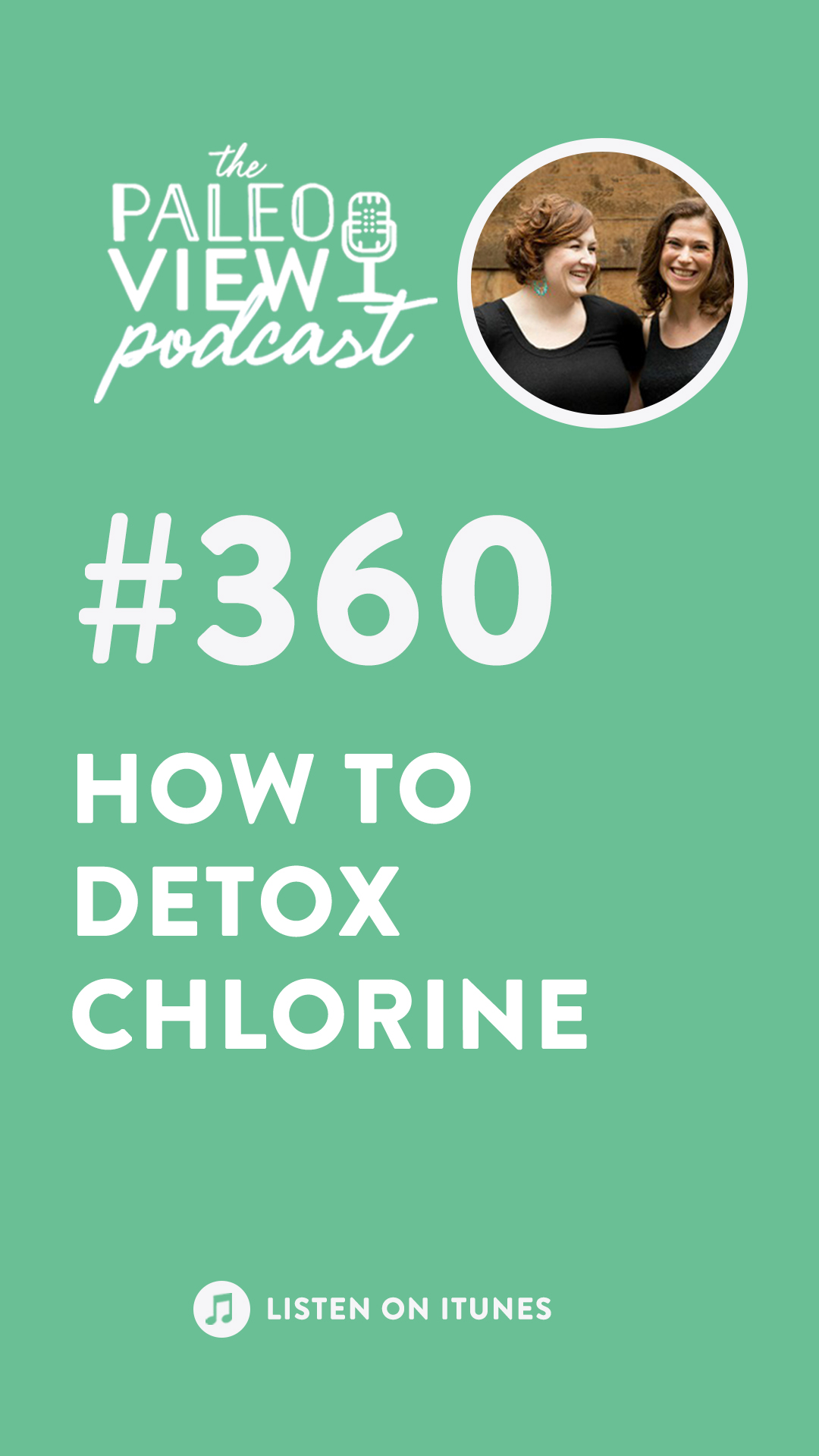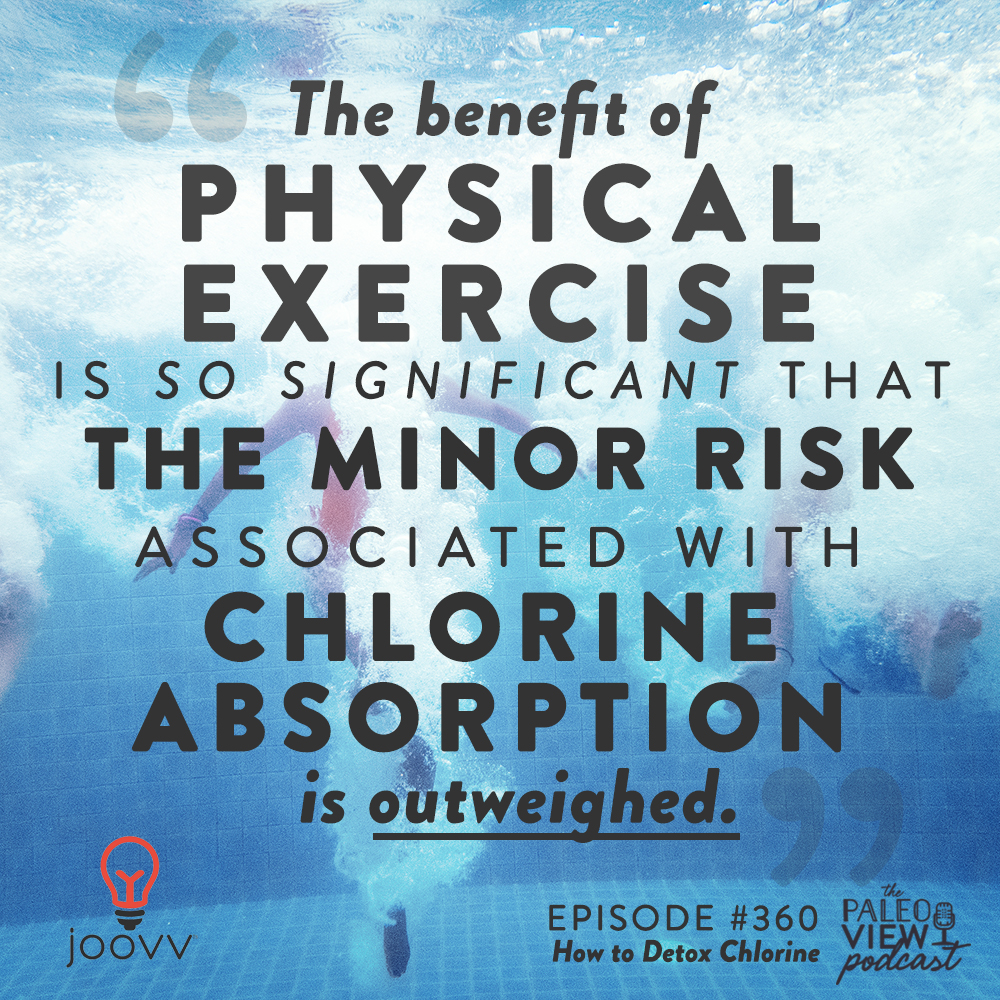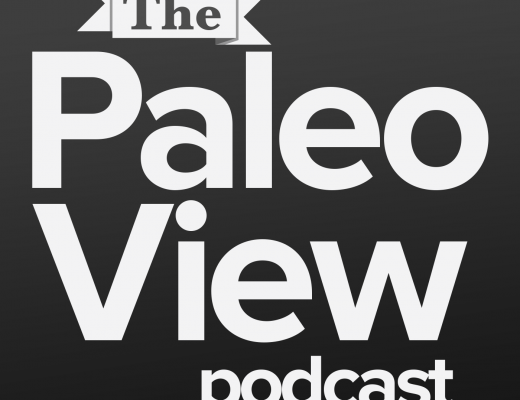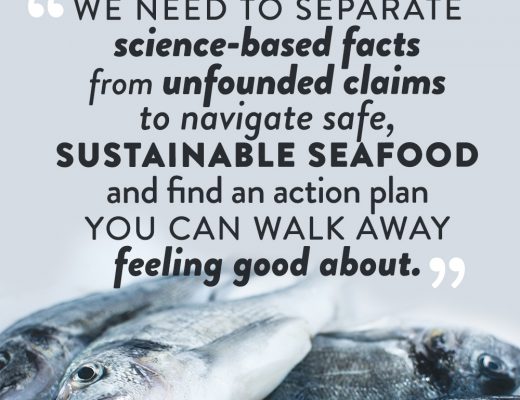
On this week’s episode, Stacy and Sarah dig into the science behind chlorine exposure and discuss how to mitigate the possible risks associated with chlorine absorption. Dig into the science and soak up summer without fear!
If you enjoy the show, please review it on iTunes!
The Paleo View (TPV), Episode 360: How to Detox Chlorine
-
-
(0:41) Welcome
- Welcome back to the Paleo View!
- On this week’s episode, we will be discussing chlorine and the science behind what the exposure to chlorine does and how to detox
- Sarah noted that this is a complex topic that doesn’t have straightforward answers
- Before we dive in, a big thank you to Joovv for sponsoring this week’s show
- While Stacy and Sarah will be sharing more information on Joovv as the show goes on, check them out here: https://joovv.com/paleoview
-
(3:25) The Downsides & Upsides
- It is important to start the discussion of the downsides of chlorination with a discussion of the upsides
- Chlorination is used across the globe as the number one way to disinfect pools
- It is an amazing killer of microbes
- Before chlorination of pools was a normal procedure, really harmful illnesses were transmitted through pools
- Chlorination is an amazing tool for making sure that swimming pools are safe from a micro perspective
- It does come at a bit of a trade-off though
- Because chlorine interacts with organic molecules, there is a variety of by-products that are chlorine based molecules that are formed and are potentially problematic
- monochloramines
- dichloramines
- i Trichloramines
- trihalogenometans (THM)
- haloacetic acid (HAA)
- There are other halogens that have been used to disinfect pools, but they all also cause similar by-products
- There is an obvious solution
- There is a move to create new filtration systems though
- One of the things that happen with these chlorine by-products is that they are evaporating off the surface of the water and they are all oxidants
- The mechanism behind a lot of the issues that they cause are all oxidative damage
- They are highest in the air just above the surface of the water
- There is a move to create air filtration systems in public pools, especially where elite athletes train
- A lot of the research stems from studies on elite swimmers
- They have typically double the asthma rates of the average population
- There is this really interesting give and take that has to do with the chloramine
- The amount of chloramine in the air is very different depending on the pool you are swimming in
- Most of the science has to do with asthma and other lung issues
- Elite athletes, in general, have higher rates of asthma and higher rates of lung infections
- We see this in swimmers, cyclists, triathletes, and long-distance runners
- Chlorine is not awesome because it is a toxic chemical
- These low levels of chlorine exposure that we are getting through chlorinated water, assuming the water is treated correctly, are associated with problems
- So is elite training though
- Take a moment to recognize that while swimmers have higher rates of asthma, so do a lot of elite athletes
- That is because this level of training actually suppresses aspects of the immune system and over activates other systems in the body
- Other athletes that don’t step foot anywhere near a pool also have higher rates of asthma
- But chlorine does seem to be a contributor
- This is because of the disruption that is happening to the lung barrier
- But chlorine does seem to be a contributor
- These low levels of chlorine exposure that we are getting through chlorinated water, assuming the water is treated correctly, are associated with problems
- Barrier tissues are made up of a type of cell called an epithelial cell
- These cells have a top and a bottom with different processes happening within both the top and bottom
- Our skin, lungs, gut barrier and sinuses are made up of epithelial cells
- All of these tissues have the job of protecting the inside of our body from things happenings outside of our body
- Lungs and gut are different in the sense that they have to be somewhat permeable
- So even low levels of toxin exposure in the air above the surface of the pool can potentially disrupt the lung barrier
- There are some interesting studies showing that it’s not just that someone with a predisposition to asthma has asthma made worse by breathing in chloramine, but actually, chloramine is contributing to the development of asthma
- There are studies showing different sizes of effect
- The majority of studies are showing that chlorine compounds do contribute to asthma and allergies later in life
- However, this is not uniform data
- The magnitude of the effect is very different
- So there isn’t enough data to hone in on a common understanding
- Where the research is with this is still even just clarifying that the effect exists and understanding the mechanisms
- The mechanism seems to be the fact that chloramine and these other chlorine by-products are oxidant molecules that cause oxidative damage
- They cause damage to the lung barrier
- The majority of studies are showing that chlorine compounds do contribute to asthma and allergies later in life
- Because chlorine interacts with organic molecules, there is a variety of by-products that are chlorine based molecules that are formed and are potentially problematic
- Chlorination is used across the globe as the number one way to disinfect pools
- It is important to start the discussion of the downsides of chlorination with a discussion of the upsides
-
(15:38) Digging Deeper into the Research
- What can we do to prevent the negative effects that come with chloramine exposure?
- There is no science to look at anything like this
- We can infer that nutrients that are important for lung-barrier function are going to be really important for protecting the lung-barrier against the assault that these chloramine compounds are causing
- Vitamin A, Vitamin D, Zinc, Vitamin C, Omega-3 fats, and the gut microbiome
- All of these nutrients are already baked into a Paleo and AIP diet template
- Sarah inclination out of this is to just be mindful of her barrier tissue nutrients
- Sarah would also add glycine to the nutrient list even though there is no specific information linking glycine and lungs
- However, we know that glycine is important for other barriers because it forms connective tissue and there is a lot of connective tissue in the lungs
- So Sarah would make sure she is adding liver into her mix of foods, checking her vitamin D levels and supplementing accordingly, eating a lot of seafood and vegetables, and making sure she is looking after her stress, sleep, etc.
- Sarah would also add glycine to the nutrient list even though there is no specific information linking glycine and lungs
- Stacy asked if there is information available on the rate of absorption
- Sarah didn’t see anything with that particular data
- There were two styles of studies that Sarah found through her research
- One is done on elite athletes where they are spending hours in the pool every single day and have the highest risk
- The other studies that are being done on general or pediatric populations are showing a lot more mixed results
- A lot of this has to do with how much time these study participants are spending in the pool
- There are some interesting studies where they look at an hour of swimming and looking at mechanisms
- Chloramine can be absorbed into the skin
- What can we do to prevent the negative effects that come with chloramine exposure?
-
(25:52) Skin Health
- Stacy asked if using the dry sauna after swimming is helpful
- Detoxification, in general, is really helpful
- Joovv is also really good to help with this
- We push a lot of toxins out through our skin through sweating
- Detoxification, in general, is really helpful
- The other major concern with chloramine exposure is called chlorine contact dermatitis, which is a form of eczema
- Chlorine disrupts skin barrier (leaky skin = eczema)
- When there is a defect in the skin barrier that allows things to cross in that simulates an inflammatory response you get these little patches of inflamed, red, scaly skin
- There have been some interesting studies that look at an hour in the pool and how that is changing the skin and how it is working as a barrier
- Sarah shared more on the findings from this study
- An hour in the pool basically increases the permeability of the skin
- In the context of other risk factors for eczema thank you are creating this situation where eczema can form
- That is why you don’t see this happen in everyone, as there are gene mutations linked with eczema
- In the context of other risk factors for eczema thank you are creating this situation where eczema can form
- Chlorine is basically the barrier disruption that can be that initial event that leads to eczema
- The study found that the skin returned to normal within 24-hours
- The chlorine by-products are disrupting the skin barrier in a way that is very recoverable
- This implies that if we are doing all the other really important skin health things, the impact should be minimal if any at all
- Give the skin the nutrients it needs to recover quickly
- There is no data specifically linking an increased risk of chlorine contact dermatitis with vitamin D deficiency
- Sarah doesn’t think it is a huge leap of logic to go from the nutrients that are important for skin barrier health are going to be important for skin barrier health when that barrier is assaulted by chloramine
- How to protect your skin against chlorine based eczema
- Once you have it, don’t treat it with histamine creams
- Its an inflammatory reaction so antiinflammatory creams are going to be the best option
- If you have a case that needs immediate intervention, go to your doctor
- However, if it is a minor reaction, it will likely resolve on its own
- Avoid additional exposure and let it heal
- If you are someone who regularly gets this skin irritation, you can lube up with vaseline
- However, this isn’t a route that neither Sarah nor Stacy feel comfortable with and shared more on the ‘why’
- Once you have it, don’t treat it with histamine creams
- There are a ton of post-swimming creams that are marketed that have vitamin C in them
- Vitamin C is a really important skin nutrient
- It is a powerful antioxidant
- Using these products will not be harmful, assuming the other ingredients are also good
- However, there is zero science on whether or not vitamin C can detoxify chloramine in the skin or reduce chlorine contact dermatitis
- Vitamin C is a really important skin nutrient
- The ingredients in beauty products are not regulated so it’s challenging for the consumer to know what is good and what is not good
- There is no incentive for companies to collaborate with a researcher to test something
- Sarah is going to go back that there need to be more regulations on ingredients in personal care products
- The science is very compelling behind red and infrared wavelengths and the benefits to human physiology in a variety of situations, including skin health benefits
- There are some really good studies showing that red light therapy in the wavelengths that Joovv provides in the type of dose-response that Joovv provides can be beneficial for a variety of skin conditions
- While we don’t have the science to show that Joovv can help us recover from chlorine specifically we know that it is really good for the skin
- It can help reduce inflammation
- While we don’t have the science to show that Joovv can help us recover from chlorine specifically we know that it is really good for the skin
- For Stacy, the health benefits of regular exercise outweigh what it is that might be happening short-term with the chlorine absorption
- The benefit of physical exercise is so significant that the minor risk associated with chlorine absorption is outweighed
- Sarah began the episode with a clear reminder for this very reason
- Let’s remember why we put chlorine in pools before we get freaked out over what chlorine may do to a percentage of us
- Don’t listen to this show and think that you should never swim again because you are worried about the chlorine
- Use the knowledge of nutrition and how to arm your skin with the nutrients it needs to recover and stay strong
- Enjoy the benefits of activity
- Steps to take to mitigate the potential problems associated with chlorine:
- The nutritional aspects
- Showering right after you swim
- Take a look at Joovv
- There are some really good studies showing that red light therapy in the wavelengths that Joovv provides in the type of dose-response that Joovv provides can be beneficial for a variety of skin conditions
- To get a hook up with Joovv, you can check it out here: https://joovv.com/paleoview
- Check out this podcast episode as well for additional information and the science
- Stacy shared information on salt-water hot tubs versus chlorine hot tubs
- Stacy asked if using the dry sauna after swimming is helpful
-
(53:05) Closing Thoughts
- Stacy is off to jet set to who knows where next
- Don’t forget to meet up with Stacy at one of her events, which you can find the details here
- There will eventually be a podcast where Stacy will share the details on how they pulled the trip together
- This trip was on Matt and Stacy’s bucket list and they are so overwhelmed with gratitude that they get to experience a trip like this with their kids
- So a huge thank you listeners for your support over the years and for helping to make this happen
- Thanks again to Joovv for sponsoring this podcast
- Don’t forget to check out Joovv here: https://joovv.com/paleoview
- Thank you again for listening! We will be back next week!
- Stacy is off to jet set to who knows where next
-





